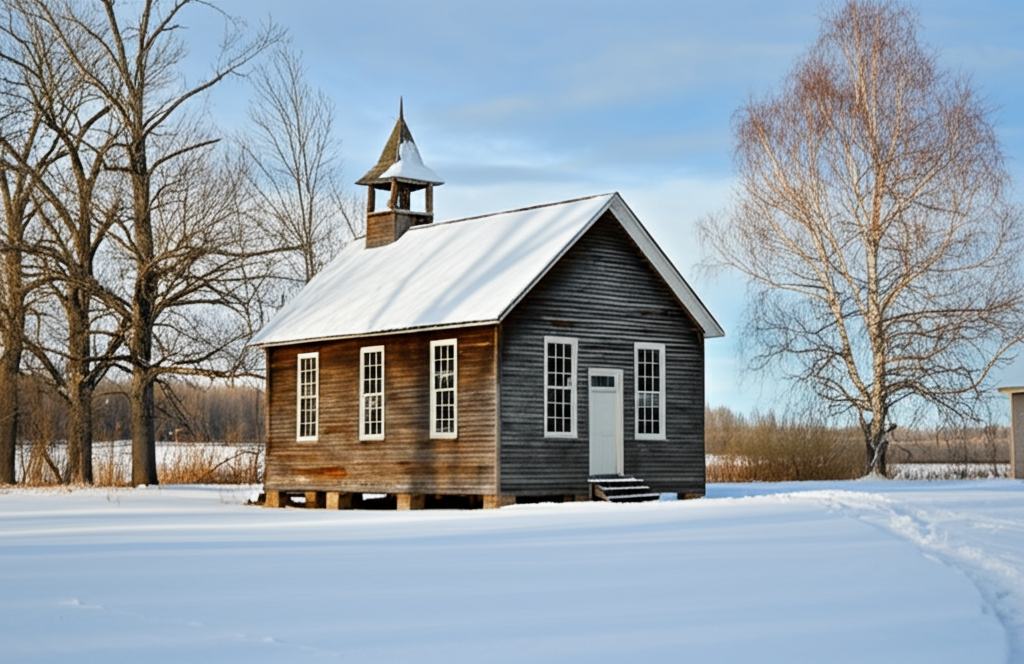Throughout history, weather has always been a formidable force affecting daily life, including education. Among these weather-related disruptions, none may be more iconic or beloved by students than the "snow day." This article explores how the concept of snow days emerged in educational systems and how policies regarding weather-related school cancellations have evolved over time.
Early History: Rural Schooling and Weather Challenges
Before the 20th century, weather-related school closures were not formalized policies but practical necessities in many communities. In rural America during the 18th and 19th centuries, many children attended one-room schoolhouses that were often miles from their homes. During harsh winter months, particularly in the northeastern and midwestern states, heavy snowfall could make roads impassable and travel dangerous.
Historical records from the 1800s indicate that school attendance during winter months was often inconsistent due to weather conditions. Teachers and students alike were expected to make reasonable efforts to attend, but when blizzards struck, schools would naturally empty or not open at all. Unlike today's coordinated announcements, these closures were decentralized decisions made by individual teachers or local trustees based on immediate conditions.
The rural school calendar itself was often structured around seasonal needs, with many schools operating on different schedules than today's standard academic year. Some rural areas held "winter terms" when farm children were less needed for agricultural work, meaning school was in session during the snowiest months specifically because children could be spared from farm labor.
The Early 20th Century: Urbanization and Transportation
The concept of the modern snow day began to take shape in the early 20th century as education became more standardized and urbanized. Several key developments contributed to this evolution:
- Mandatory attendance laws: By 1918, all states had some form of compulsory education law, creating the need for official policies regarding unavoidable absences.
- School consolidation: As smaller schools merged into larger district systems, children often traveled greater distances to school, increasing transportation concerns during inclement weather.
- School buses: The introduction of school buses in the 1920s created new safety considerations. A school system now had to consider whether buses could safely navigate roads.
By the 1930s and 1940s, many school districts in snow-prone regions had begun developing more formal policies regarding weather-related closures. Superintendents assumed the responsibility of deciding whether conditions warranted cancellation. However, these decisions remained largely local and often lacked consistency even within the same geographical areas.
Historical Note
The first documented official "snow day" policies began appearing in school board minutes in the northeastern United States during the 1930s, coinciding with the rise of motorized school transportation.
The Communication Revolution: 1950s-1980s
The post-World War II era saw significant changes in how snow days were implemented and communicated:
Radio Announcements
The widespread adoption of radio in American households enabled school districts to announce closures efficiently. The familiar routine of families huddled around radios waiting for their school's name to be called became a winter tradition.
"School closure announcements became a staple of morning radio programming in snow-prone regions."
Standardized Processes
School systems began developing more systematic approaches to deciding when to cancel classes, including criteria like snow accumulation, temperature, and road conditions.
"By the 1960s, many districts had formal decision matrices for weather-related closures."
Increased Bureaucracy
As school systems grew larger and more complex, the decision to cancel school involved more stakeholders, including transportation departments, facilities management, and weather monitoring.
"Superintendents began consulting with multiple departments before making closure decisions."
By the 1970s and 1980s, television joined radio as a primary means of communicating snow day announcements, with scrolling lists of closed schools becoming a familiar sight during winter weather events.
Radio Era Communication
- Families gathered around radios early morning
- Alphabetical listings of closed schools
- Local radio personalities became trusted voices
- Limited advance notice - often day-of decisions
- Announcements typically began at 5:30-6:00 AM
Television Era Additions
- Scrolling text at bottom of TV screens
- Visual weather maps and forecasts
- Color-coded systems (closed, delayed, early dismissal)
- Weather-focused morning news segments
- Increased regional coordination in announcements
The Contemporary Era: Technology and Alternative Approaches
The late 20th and early 21st centuries brought significant changes to snow day policies:
Advanced Weather Forecasting
Improved meteorological technology enabled administrators to make more informed decisions, sometimes announcing closures preemptively based on forecasts rather than waiting for snowfall to accumulate.
Instant Communication
The rise of the internet, automated calling systems, email, text messaging, and social media revolutionized how schools communicate closures to families, making notifications almost instantaneous.
Snow Day Alternatives
Many districts began implementing "delayed starts" or "early dismissals" as alternatives to full-day cancellations, attempting to balance safety concerns with educational continuity.
Built-in Snow Days
School calendars began incorporating a predetermined number of potential snow days into their academic year planning, with makeup days scheduled if needed.
The Digital Transformation: Remote Learning and the Future of Snow Days
Perhaps the most dramatic shift in snow day history occurred with the COVID-19 pandemic in 2020, which forced nearly all schools to develop remote learning capabilities. This technological shift has fundamentally challenged the traditional concept of snow days:
Virtual snow days
Many districts now have the option to convert what would have been traditional snow days into remote instruction days, ensuring educational continuity despite physical closures.
End of the snow day?
Some educational systems have announced policies effectively eliminating the traditional snow day, maintaining that weather-related physical closures will automatically trigger virtual learning days.
Cultural resistance
The potential disappearance of the traditional snow day has met significant cultural resistance from students, parents, and even educators who value these unexpected breaks as a beloved tradition and mental health respite.

Modern technology has enabled remote learning during snow days, potentially changing this long-standing tradition.
Policy Disparities and Considerations
Modern snow day policies vary significantly across regions based on several factors:
Northern Regions
Higher thresholds for closure due to better infrastructure and experience
Mid-Atlantic/Midwest
Moderate preparation but variable conditions create challenges
Southern Regions
Limited equipment and experience leads to lower thresholds
These regional differences explain why the same weather system can result in different decisions across geographic areas. A snowfall that barely affects schools in Minnesota might close schools for days in Georgia.
| Region | Typical Snow Threshold | Policy Approach |
|---|---|---|
| Northeast | 6+ inches | Built-in snow days with established protocols |
| Midwest | 4-6 inches | Temperature considerations alongside snowfall |
| South | 1-2 inches | Quick closures due to limited infrastructure |
| West Coast | Varies widely | Focus on road conditions and transportation |
The socioeconomic considerations of snow days have become increasingly important in policy discussions. Districts must balance:
- Childcare challenges for working parents
- Food security for students who rely on school meals
- Digital equity when implementing remote learning alternatives
- Impact on academic calendars and standardized testing schedules
Conclusion
The history of snow days reflects broader changes in American education, technology, and society. What began as informal, necessary accommodations to winter weather has evolved into complex policy decisions balancing educational mandates, safety concerns, technological capabilities, and cultural traditions.
As climate change brings more unpredictable and extreme weather events and as digital learning continues to evolve, snow day policies will likely continue to transform. Yet regardless of these changes, the announcement of a "snow day" will likely maintain its place as one of the most exciting phrases in a student's school experience—a small but meaningful moment where nature asserts its authority over even our most structured institutions.
Final Thoughts
The evolution of snow days in education represents a fascinating intersection of technology, policy, and cultural tradition. While modern capabilities may be changing how we handle weather disruptions, the joy and anticipation of snow days remains an enduring part of the educational experience.
As we look to the future, finding the right balance between educational continuity and preserving these cherished traditions will be an ongoing challenge for school administrators and policymakers.
This article was prepared with input from educational historians, school administrators, and policy researchers. Special thanks to the National Weather Service and the Education Archives Association for providing historical records and documentation.

